By Rick VanSickle
In this jam-packed Niagara Wine Report, we take a deep dive into the wines from Moray Tawse’s two wineries — Tawse and Redstone — and point out some stellar local wines being released at Vintages stores on Saturday.
Wines In Niagara has always tries to keep up with the evolving portfolio of wines from both Tawse and Redstone, which share deep and diverse portfolios vintage to vintage under the careful eye of chief winemaker Paul Pender and his winemaking team.
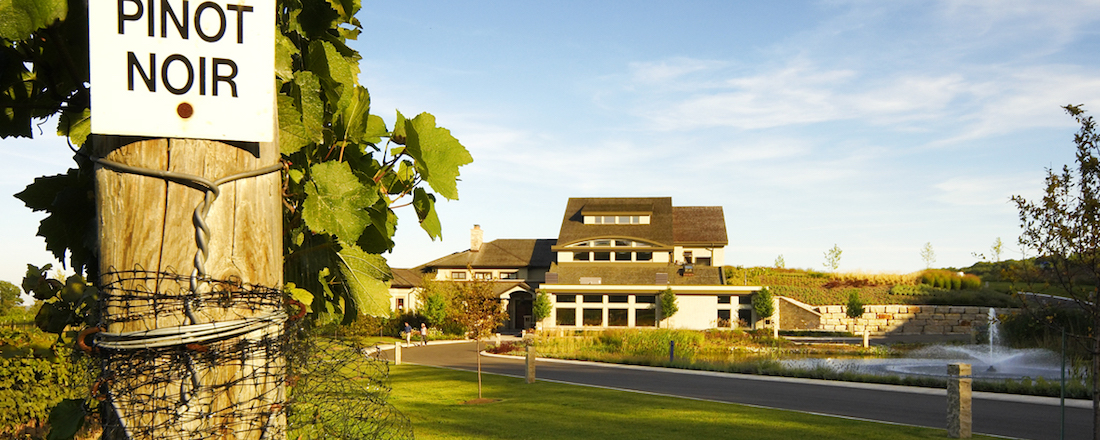
Situated on the lower slopes of the Niagara Escarpment, Tawse is a family-owned organic winery that began when Moray Tawse purchased 6 acres on the Cherry Avenue property in 2001. In 2005 he opened his state-of-the-art winery, complete with a six-level, gravity-flow design, geo-thermal system and a wetland bio-filter. The inspiration for his first Niagara property came from his love of Burgundian Pinot Noir and Chardonnay (he also owns vineyards in Burgundy and bottles his own label). Uniting traditional winemaking techniques with state-of-the-art technology, Tawse strives to produce terroir-driven wines reflective of where the grapes are grown.
Redstone Winery is the newer of the two wineries Tawse owns. Named for its red clay soil and large stones, the 38-acre Lincoln Lakeshore property was purchased in 2009 and is home to a hospitality centre and a locally-inspired restaurant.
Following the reviews below for Tawse and Redstone, we offer our suggestions from the Saturday release of Niagara wines (plus one B.C. wine) being released Saturday. It’s a superstar lineup that features Thomas Bachelder, Hidden Bench, On Seven, Cloudsley, Henry of Pelham, Featherstone and Mt. Boucherie from the Okanagan Valley.
But first … Tawse and Redstone.
Trio of Tawse cans
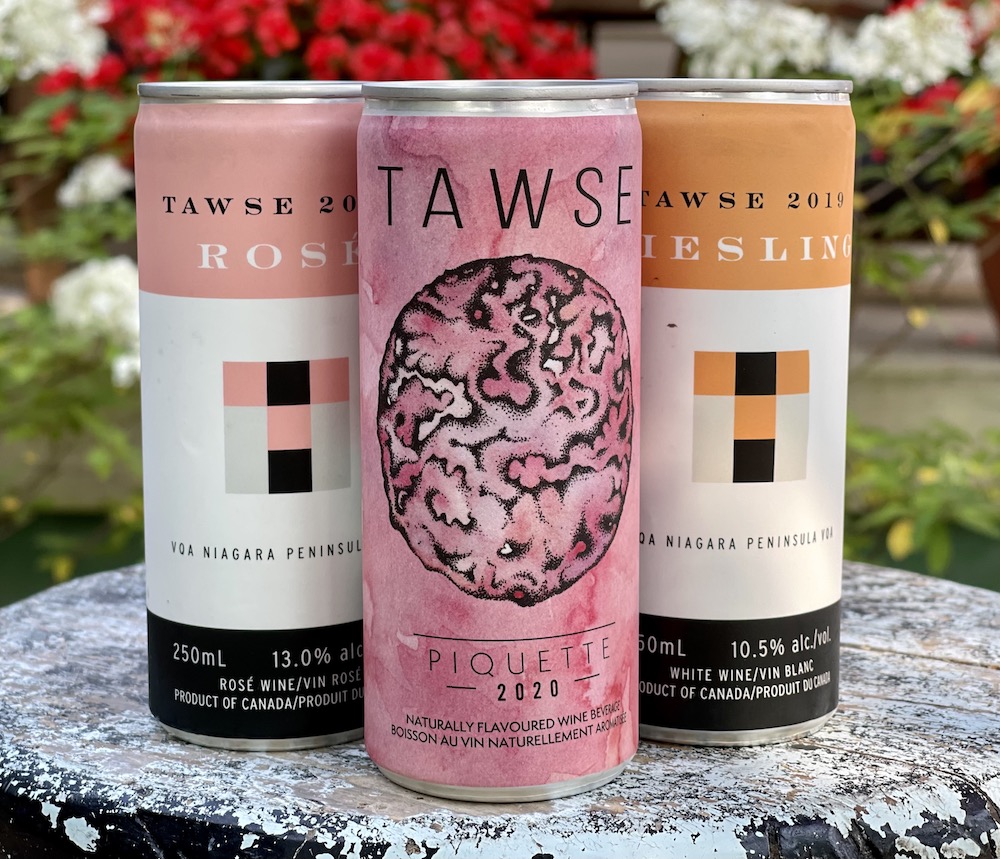
Tawse Rosé 2020 ($6 per can, retail shop and restaurants, 88 points) — The blend for this conveniently canned rosé is Cabernet Sauvignon, Cabernet Franc, Pinot Noir and Merlot. It has a nose of field raspberries, strawberries and subtle herbs. Only the slightest pinch of sweetness on the palate, then a basket of red berries followed by a fresh finish. The can takes nothing away from the rosé and it’s recommended to sip it straight from a well-chilled can.
Tawse Riesling 2019 ($6 a can, retail shop and restaurants, 88 points) — All the fruit comes from estate vineyards, including Limestone Ridge, Quarry Road and Carly’s Block. It’s fresh and lively on the palate (I skipped putting this one in a glass) and nicely balanced between the 25 g/l of RS vs. the searing acidity with zesty citrus, lime slices, white peaches, and, yes, even subtle minerality with a crisp finish.
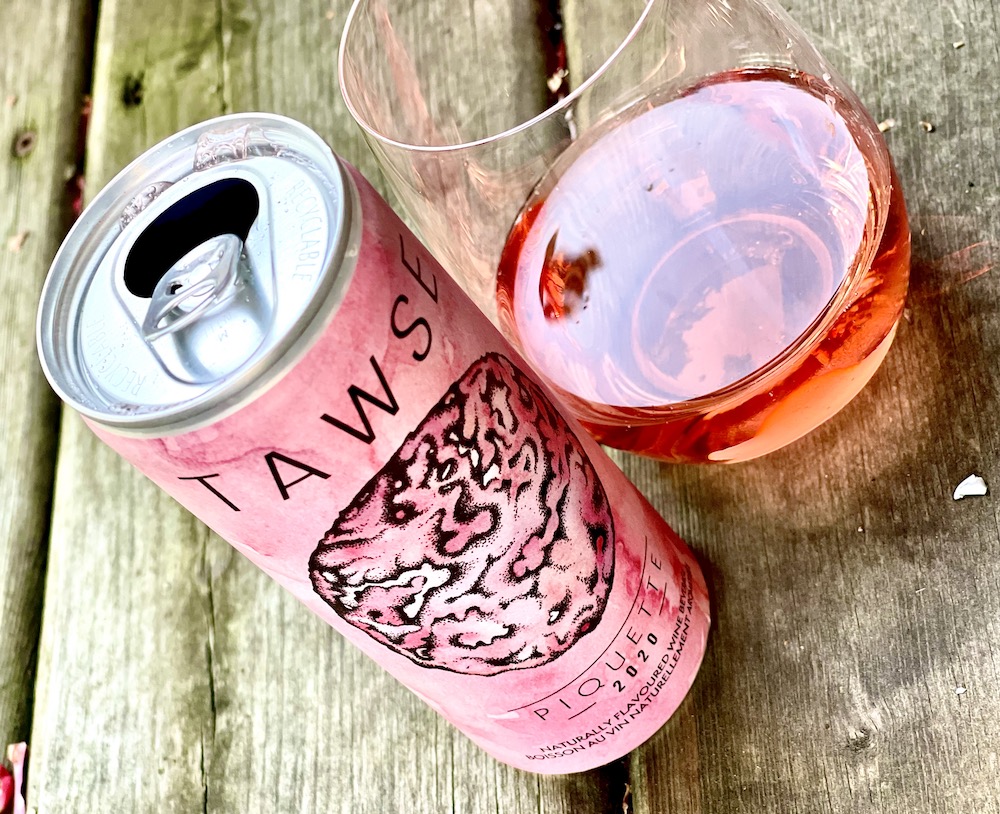
Tawse Piquette 2020 ($6 a can, retail shop and restaurants, 89 points) — I can’t think of a more appropriate vessel to house the growing trend of piquettes in Ontario than a can. Tawse’s version of piquette is made from the refermentation of grape pomace (in this case, 64% Cab Franc and 36% Cab Sauv), then infused with Tawse gin botanicals. It has a pleasant effervescence on the palate with the full range of red berries, herbs and botanicals in a light and fresh style that is highly gulpable. Only 6.5% abv in this wine “beverage.”
The Tawse rosé
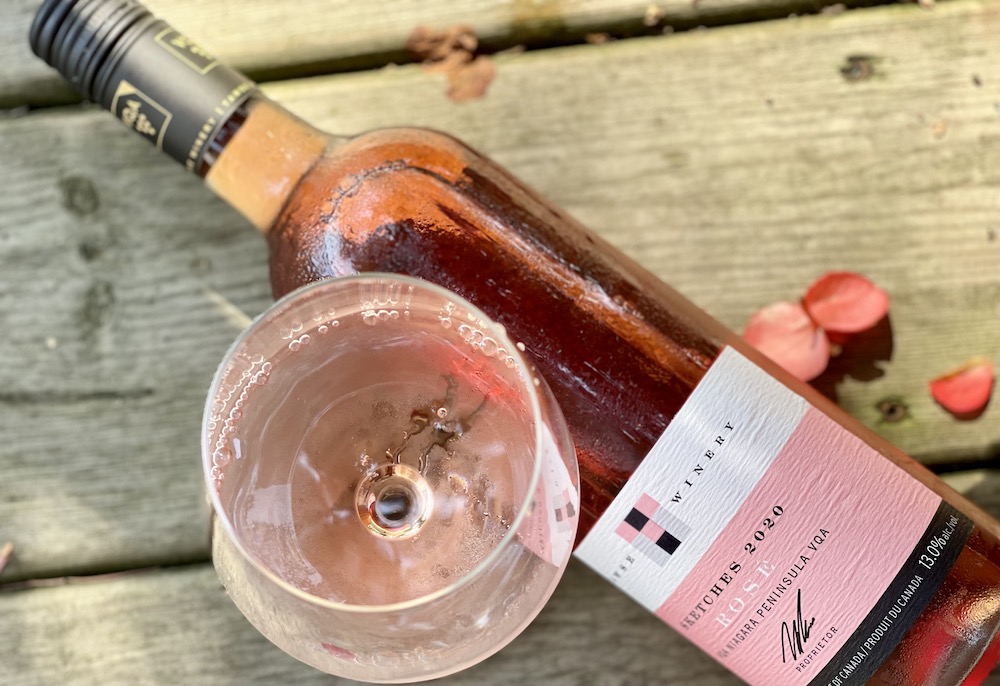
Tawse Sketches Rosé 2020 ($18, Vintages, winery, 88 points) — This is essentially the same rosé as the one in the can above, and sure enough, you can’t tell them apart, speaking to the quality of cans these days. See tasting notes above.
Tawse white wines
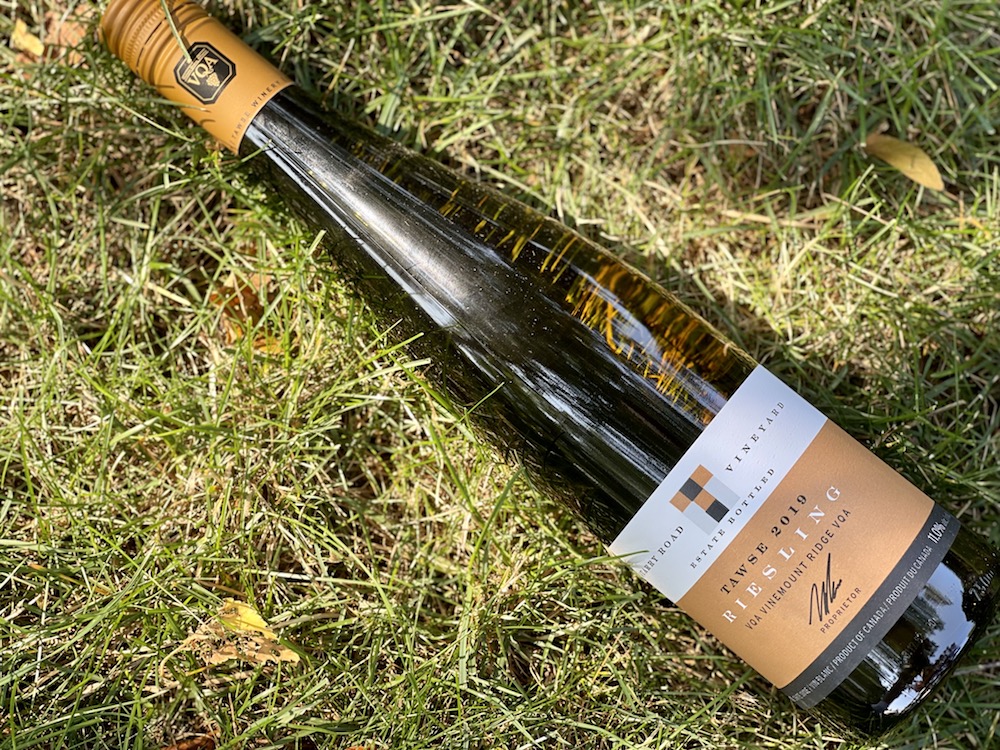
Tawse Quarry Road Riesling 2019 ($25, retail shop, restaurants, Vintages, 90 points) — This is a lime/mineral bomb on the nose with honeysuckle, grapefruit, apple and a floral note. There’s an interesting tug of sweet and tart citrus on the palate with lime zest, wet stones and ferocious acidity driving the boat on the finish.
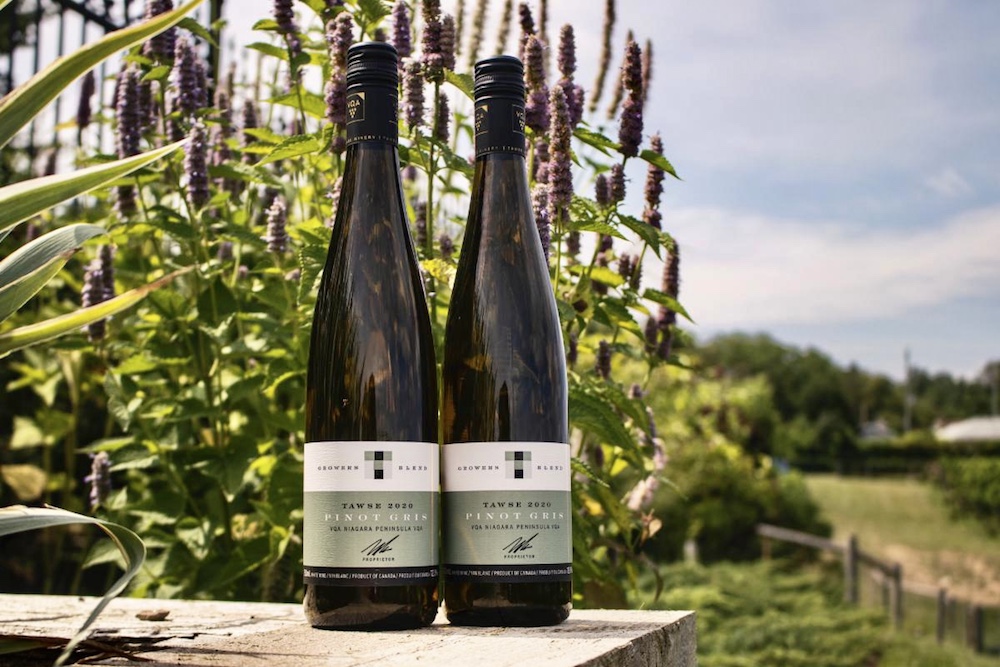
Tawse Grower’s Blend Pinot Gris 2020 ($30, winery, 90 points) — This Pinot Gris is made from fruit sourced from select vineyards in Niagara. What a lovely dry, yet highly ripe style of Gris from the warm 2020 vintage. It shows a light copper colour in the glass with overt aromas of mature apple, melon, summer peach and Asian pear. All that ripe goodness follows to the palate in a bold, fruity style with plenty of acidity to keep it lively through the finish.
The Tawse Chardonnays
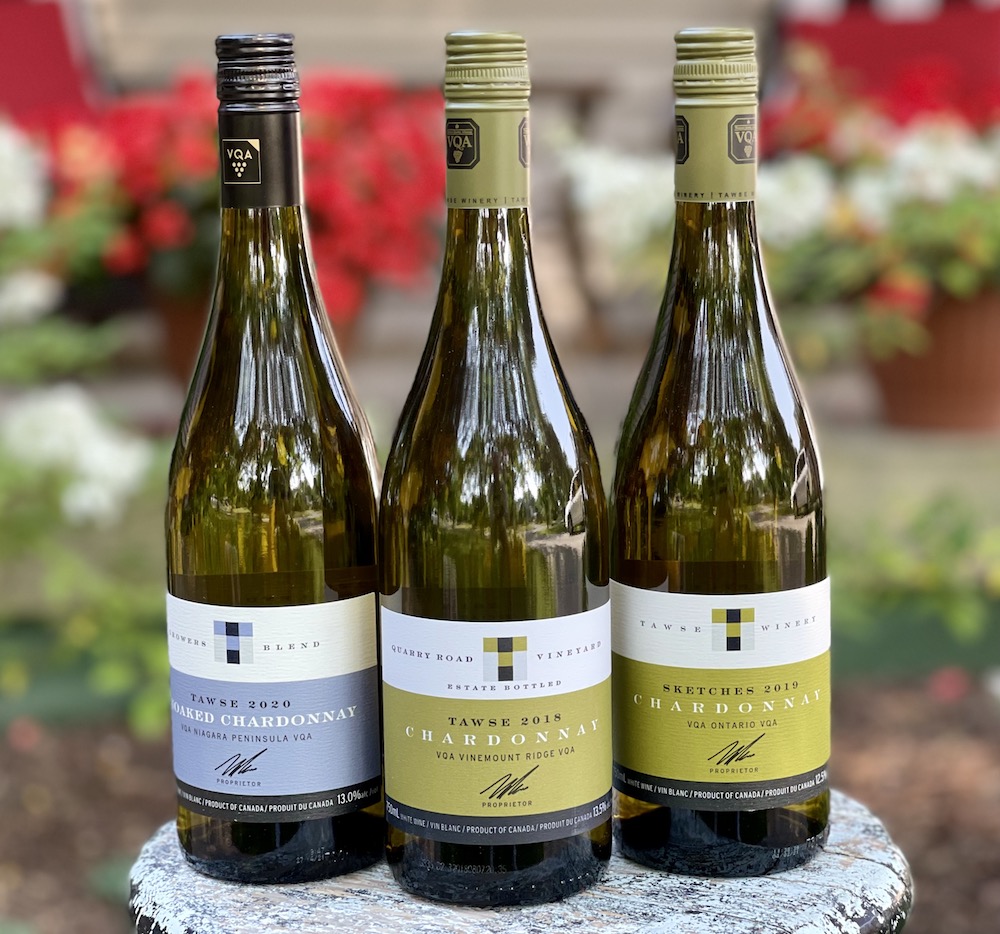
Tawse Sketches Chardonnay 2019 ($20, Vintages, winery, 88 points) — This “second label” Tawse Chardonnay is a blend of purchased and estate fruit that undergoes full malo, barrel fermentation and is barrel aged for 12 months in a mix of large and small format oak barrels. The nose shows fresh pear, toasty vanilla, golden apple, citrus and spice accents. The palate offers fresh stone fruits, integrated oak spices and mouth-watering acidity on the finish.
Tawse Unoaked Chardonnay 2020 ($20, retail shop and restaurants, 89 points) — A great value Chard that shows bright peach, apple, lemon/citrus and creamy lees notes on the nose. It’s fresh and loaded with stone fruits on the palate and shows a creamy texture that leads to a citrus-y and lifted finish.
Tawse Quarry Road Chardonnay 2018 ($37, winery, vintages direct delivery, 92 points) — Planted in 1998 on mixed limestone and clay soils, the Quarry Road estate vineyard is farmed organically and biodynamically. It’s barrel-fermented with wild yeast and aged for 16 months on the lees in French oak with no lees stirring. There is a beautiful vein of wet stones and salinity on the nose with crisp apple, lemon blossoms, peach, toasted almonds and elegant oak spices. The palate reveals a mélange of stones fruits, citrus accents, charred oak spices, toasty vanilla, story minerality and a bright and lively finish. Lots of room to cellar this beautiful wine, say 5+ years.
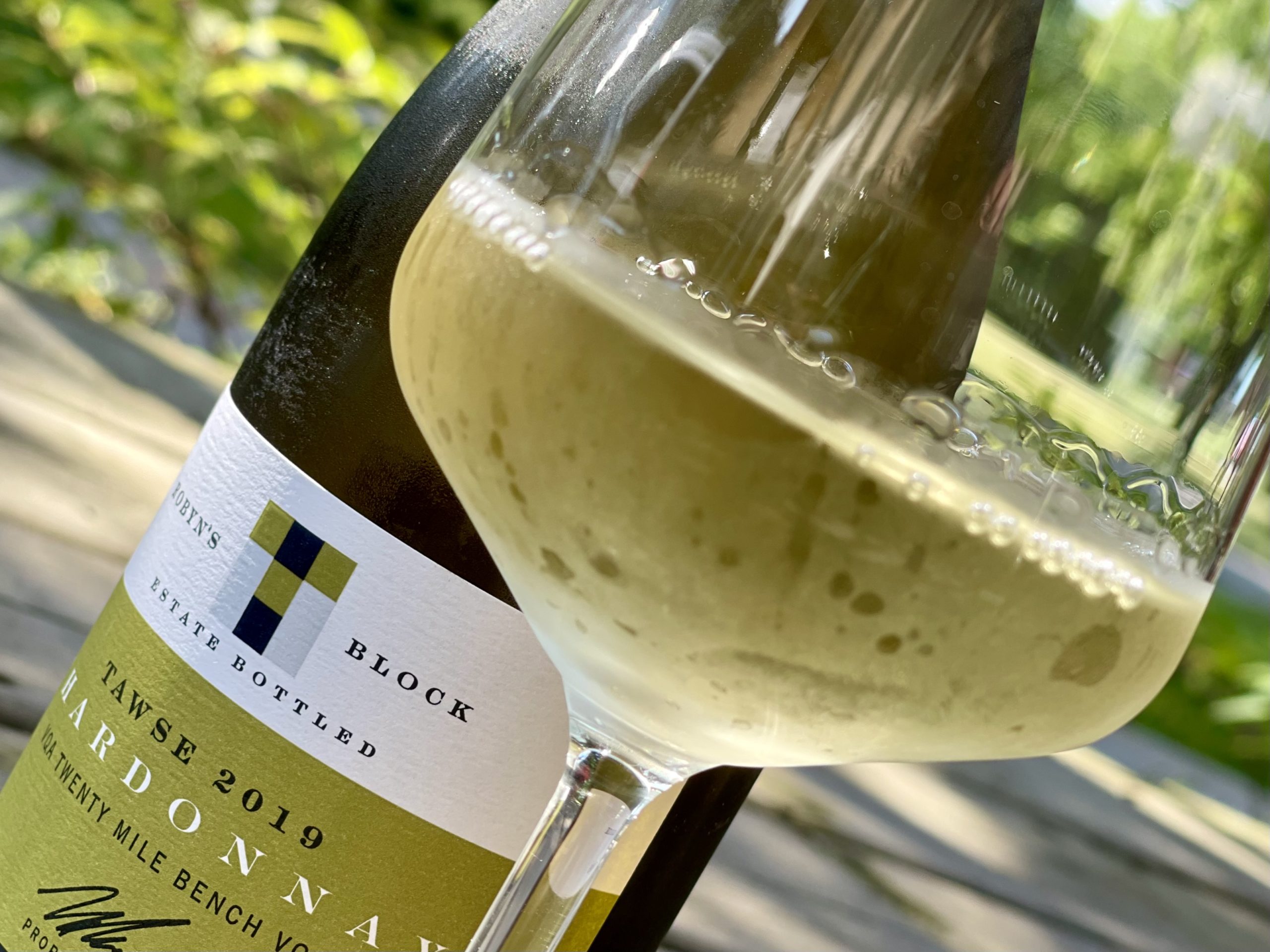
Tawse Robyn’s Block Chardonnay 2019 ($46, winery now, previously reviewed, 92 points) — The 4-acre Robyn’s Block, named for the eldest daughter of Moray and Joanne Tawse, is the top Chardonnay made at that winery year in and year out. It’s fermented and aged in French oak for 12 months from vines that are nearly 40 years old. It has a ripe, perfumed nose of pear, lemon, elegant oak spices, toasty vanilla, yellow apple and honeysuckle. It’s generous on the palate with ripe pear, quince, lemon tart, lime zest, butterscotch, vanilla, elegant spices, a creamy texture and length through a lifted and long finish. Can cellar 6+ years
Tawse skin-fermented white
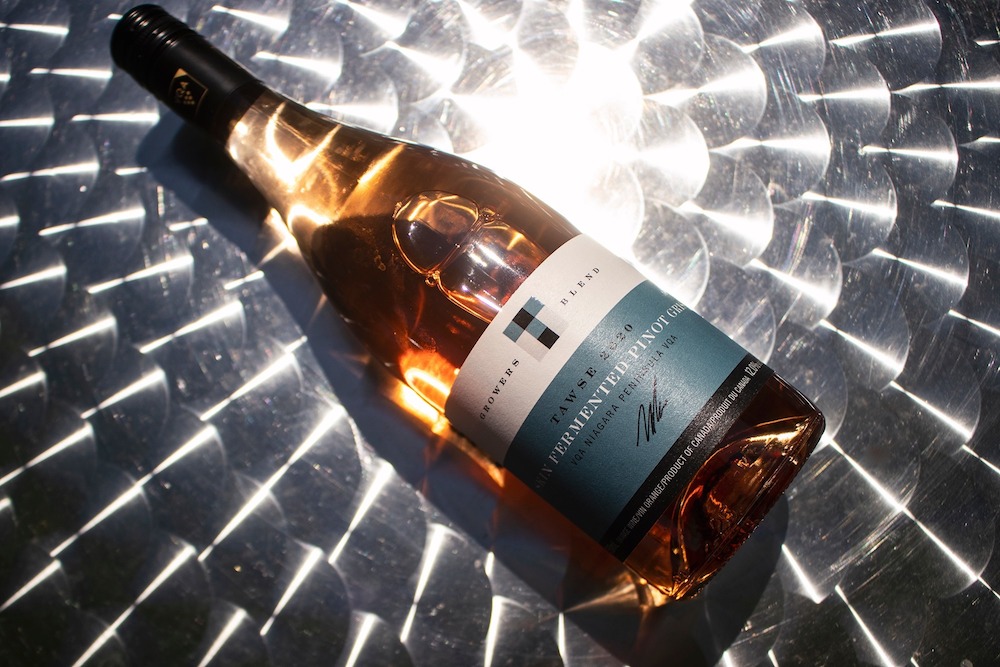
Tawse Growers Blend Skin Fermented Pinot Gris 2020 ($27, winery, restaurants, 89 points) — This orange wine is a 100% skin fermented Pinot Gris (on the skins for 10 days) that shows a sunset orange glow in the glass and an interesting nose of marmalade, peach pie, ginger, black tea and earthy notes. It’s perfectly dry on the palate with subtle reductive/earthy notes then juicy nectarine, compoted peaches, citrus rind, marzipan and marmalade to go with a firm spine of acidity on the finish.
The Tawse bubbly
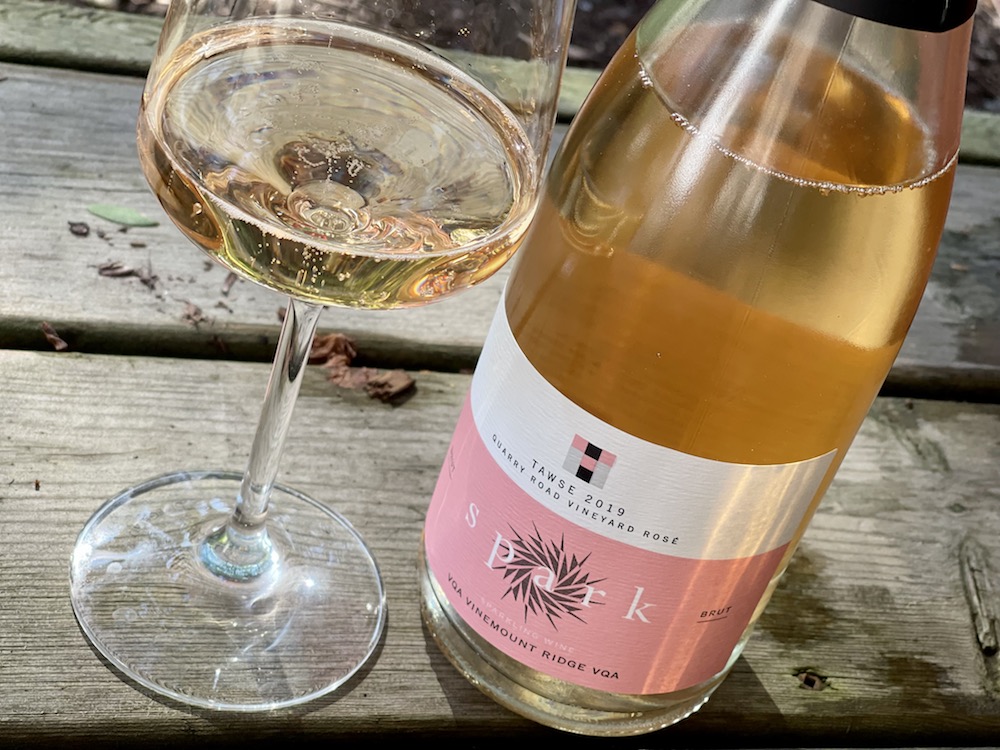
Tawse Quarry Road Spark Pinot Noir Rosé 2019 ($30, 92 points) — This traditionally made single-vineyard sparkling rosé saw 24 hours of skin contact, which gives the wine a light gold colour in the glass. It has an elegant nose of field raspberries, strawberry patch, zesty citrus, toasty brioche and cream. It shows an elegant and persistent bead in the glass with a creamy texture, mélange of red berries, lemon tart, white peach and rousing acidity through a finessed finish.
Tawse red wines
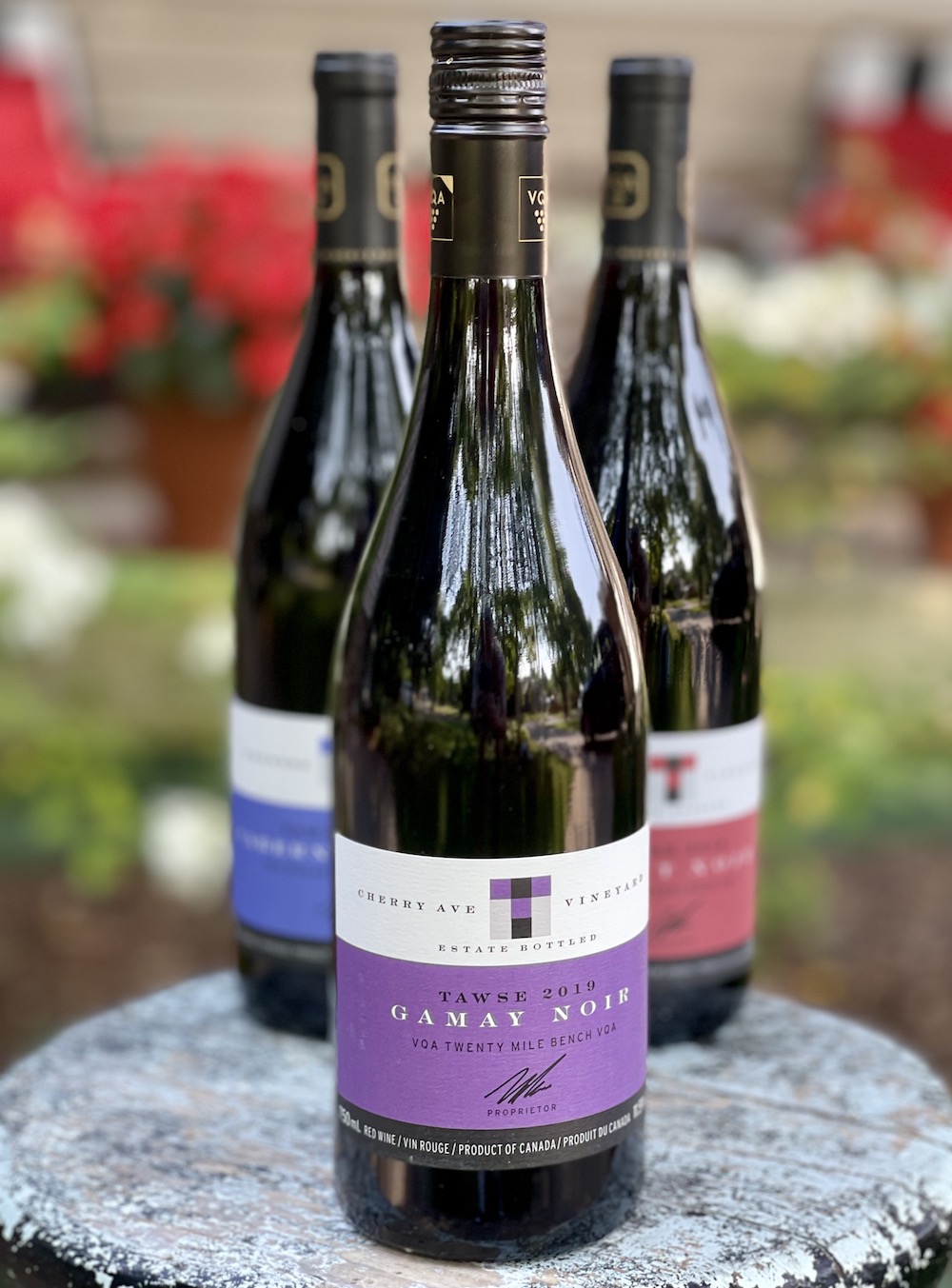
Tawse Cherry Avenue Vineyard Gamay 2019 ($32, retail shop and restaurants, 92 points) — This Gamay is hand picked and aged for six months in French oak barrels (40% new barrels). It’s big and bold (for a Gamay) with a plummy, cherry-bomb nose that adds spice and savoury notes to the mix. The palate shows tart cherries, crunchy cranberries, plums, savoury spices, light tannic structure and sizzling acidity on the finish.
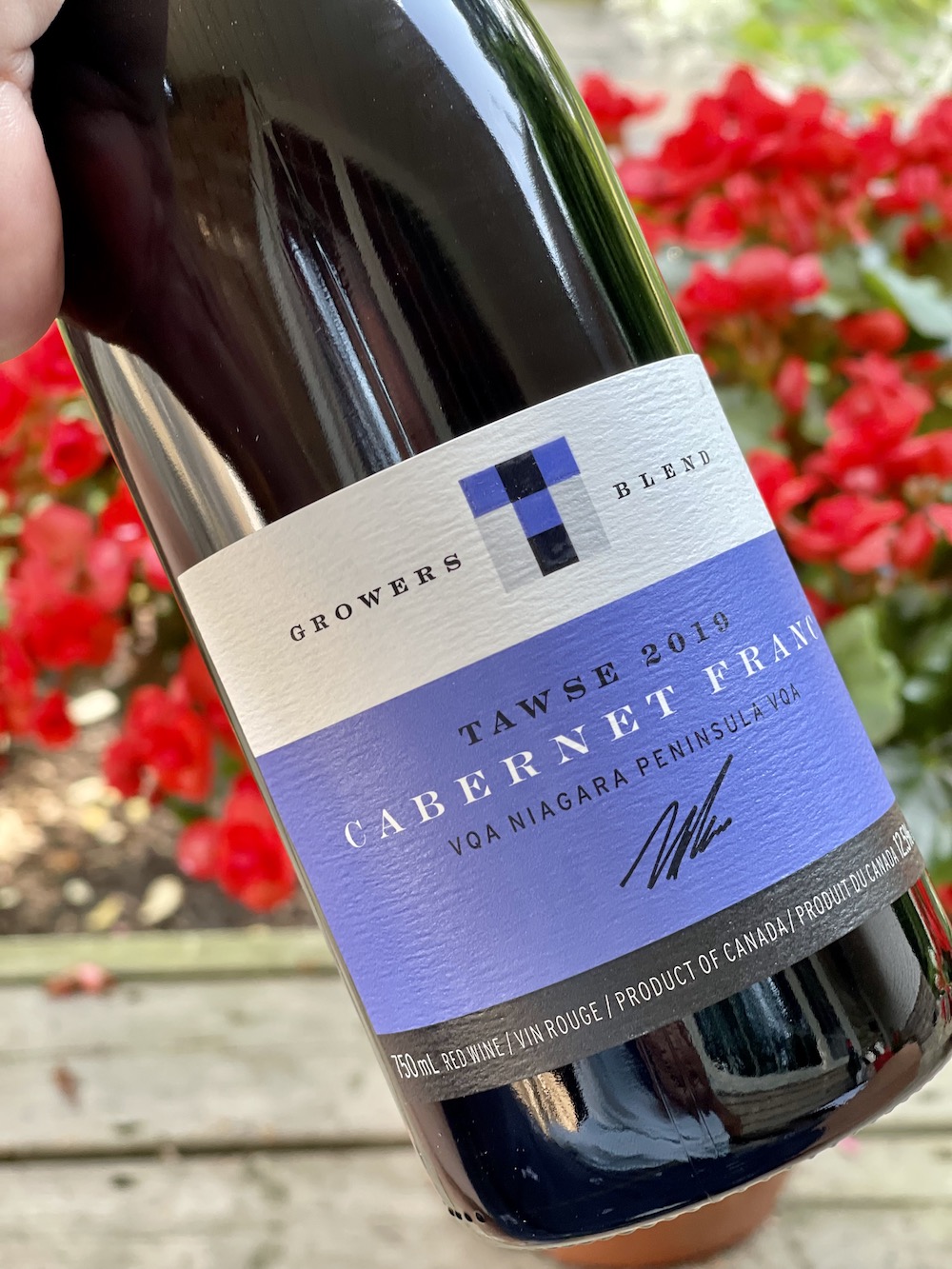
Tawse Grower’s Blend Cabernet Franc 2019 ($29, retail shop, restaurants, Vintages on Oct. 30, 91 points) — This Cab Franc was in aged in French oak barrels for 16 months (35% new oak). It has an intense nose of dark plums, black cherries, earth, cassis, cocoa, cedar, spice, herbs and smoky accents. It has fairly tight tannic structure on the palate with the full range of red berries, cocoa, elegant spice notes, blackberries, toasted vanilla, mulled herbs and decent length through a lifted finish. Can age this 5+ years.
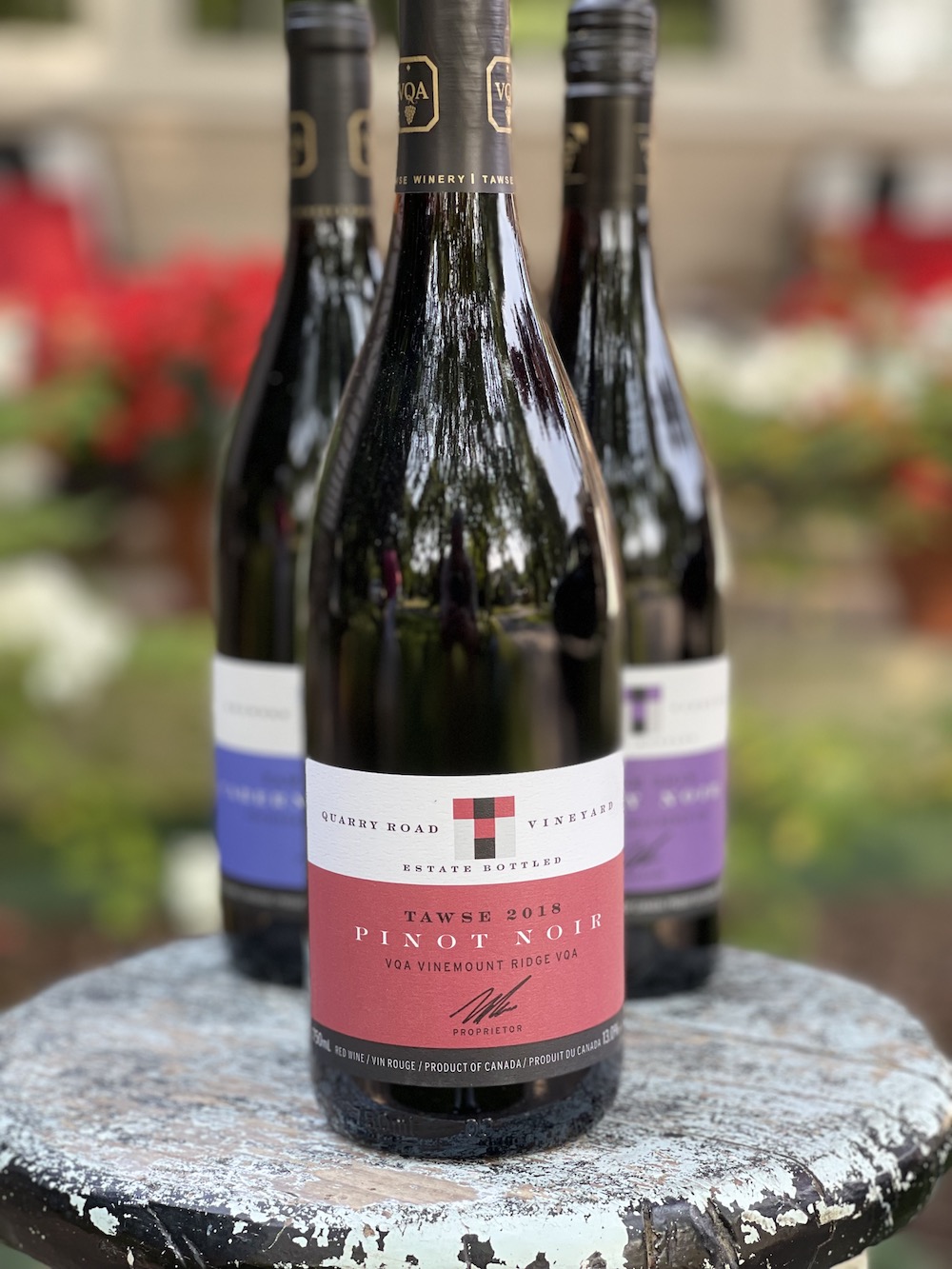
Tawse Quarry Road Pinot Noir 2018 ($36, retail shop, restaurants, Vintages on Oct. 16, 92 points) — This always reliable and top drawer Pinot is aged in French oak barrels for 16 months (35% new oak). It shows ripe black cherries, bramble, earth, some cassis, lovely spice and a savoury edge on the nose. It’s rich and savoury on the palate with earthy red berries, fine grained tannins, anise, red currants, elegant spices and a long, finessed finish. Recommended for aging 5+ years.
Redstone bubble
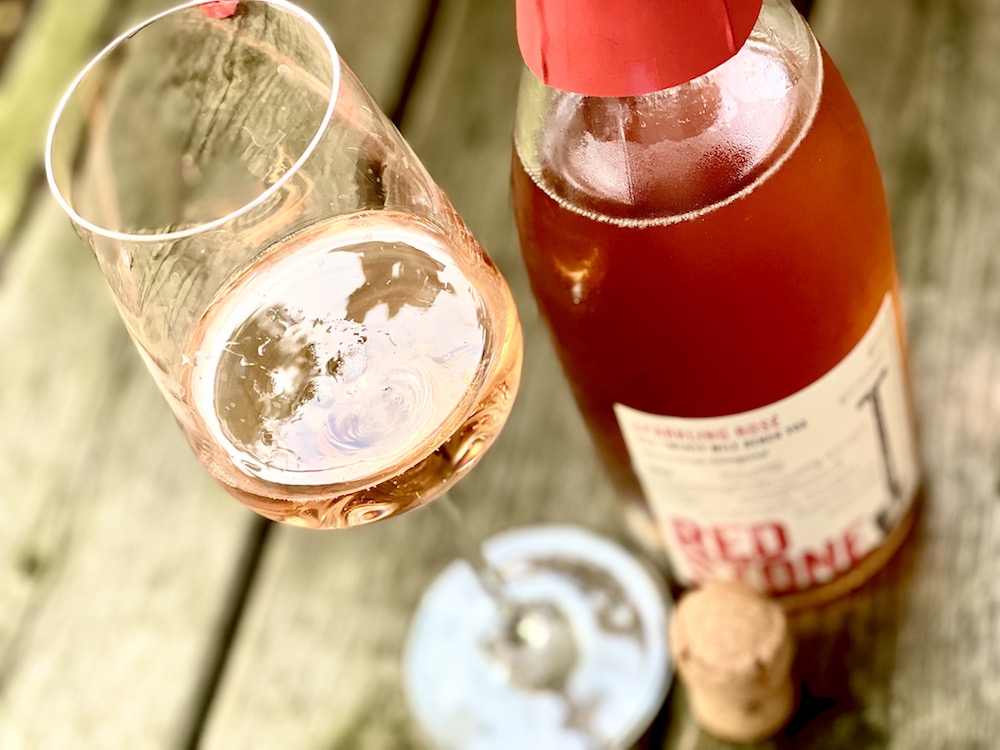
Redstone Pinot Noir Sparkling Rosé 2019 ($31, retail shop, restaurants, 91 points) — Made in the traditional method from fruit sourced in the estate’s Limestone Ridge Vineyard with 12 months on the lees. It shows a pale salmon colour in the glass and has a bright core of ripe cherries, raspberries and toasty/leesy notes. It has an elegant bead in the glass with lifted red berries in a fresh and lively style, touch of earthiness and bright, finessed finish.
Redstone red wines
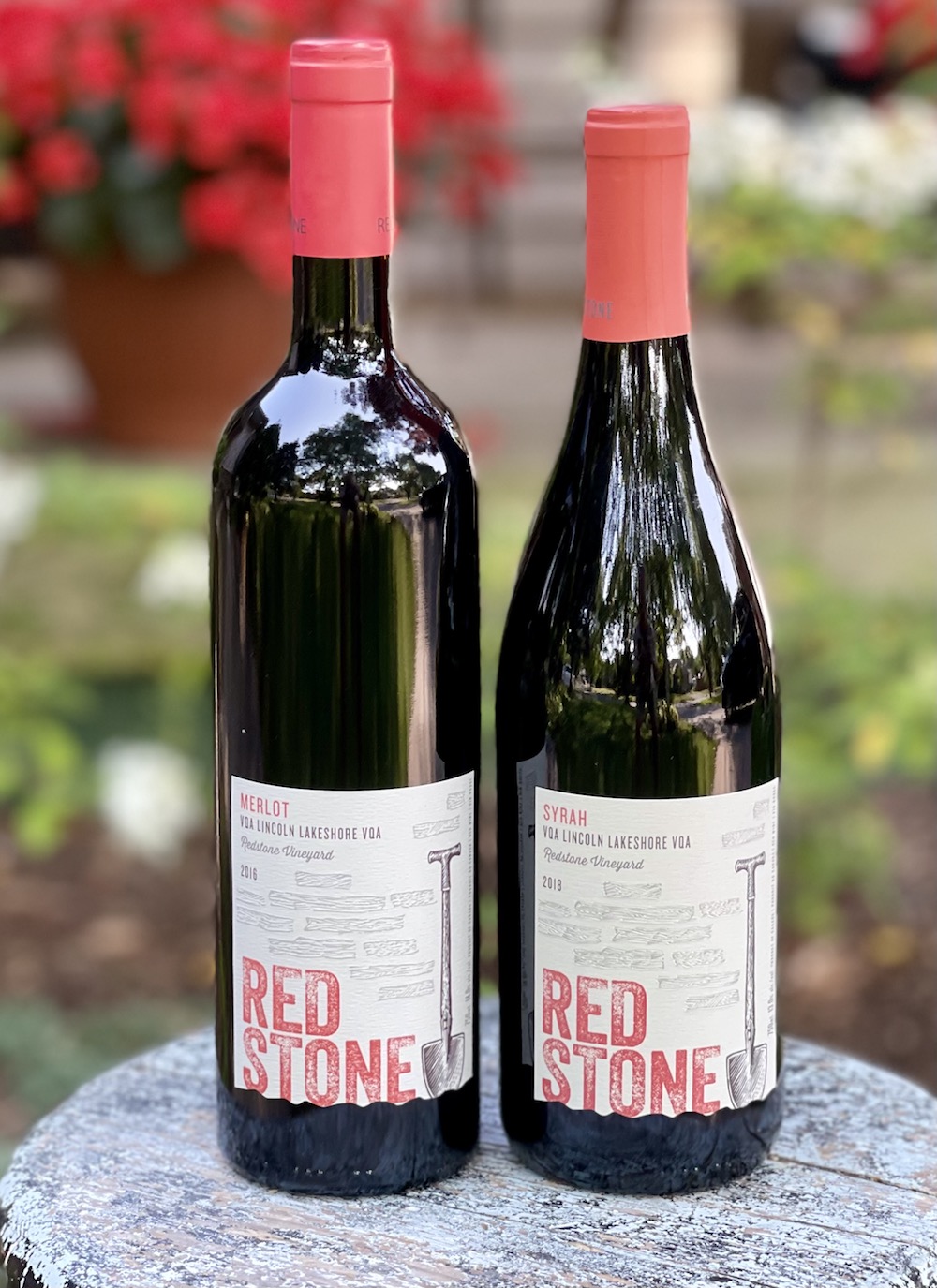
Redstone Estate Syrah 2018 ($40, retail shop, restaurants, 92 points) — The fruit for this stylish Syrah comes from the estate’s Redstone Vineyard. It’s aged for 16 months in French oak barrels (35% new oak). It shows a bright garnet colour in the glass with a smoky/savoury nose loaded with plums, dark cherries, forest floor and meaty/spicy notes. It’s smooth on the palate with savoury and peppery notes, dense dark berries and plums with smoky accents and a bright finish. Can age 6+ years.
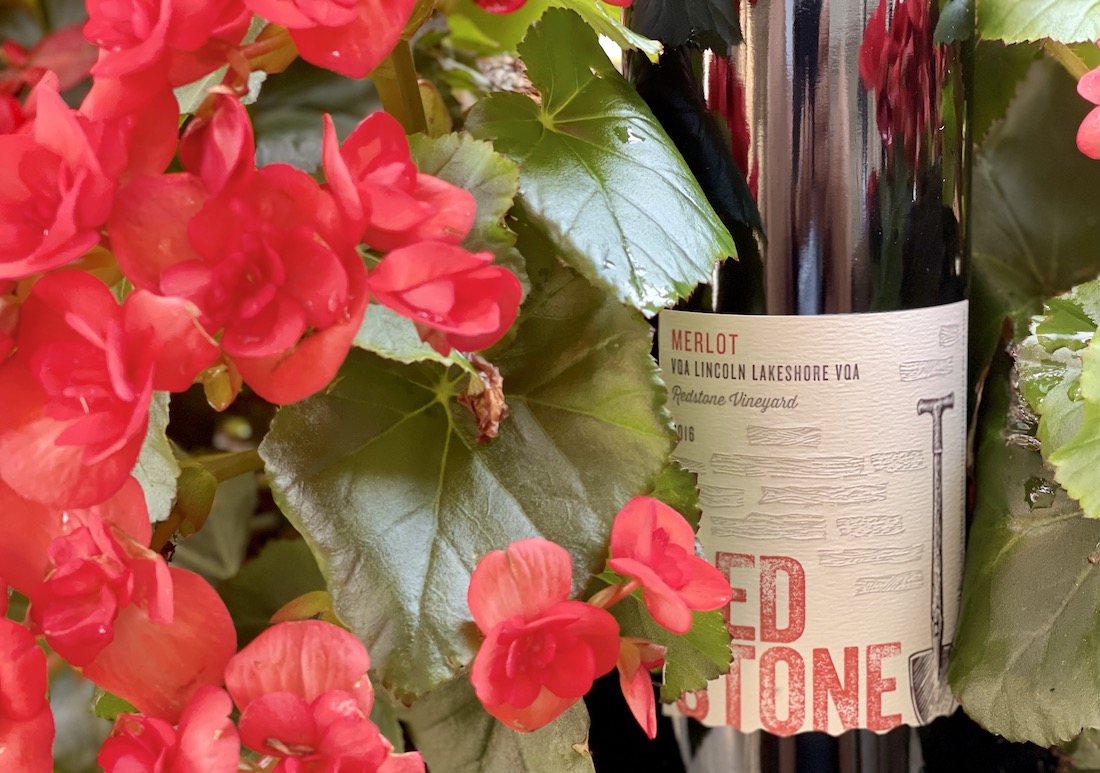
Redstone Merlot 2016 ($46, retail shop, restaurants, 94 points) — The fruit is sourced from the estate’s Redstone Vineyard and is aged for 16 months in French oak barrels (35% new oak). Simply put, this is a showstopper of a Merlot, a beautiful wine that provides a clear answer to why grape growers and wineries continue to take a chance on this variety that doesn’t fare well in the harshest of Niagara winters. What a gorgeous wine! It has a concentrated nose of rich black cherries, almost kirsch-like in its concentration, followed by ripe cassis, layers of interesting oak spices, plums and nutmeg. So intriguing. It’s seductive and powerful on the palate with a complex array of rich cassis, dark cherries, warm chocolate, subtle peppery notes, evolving tannins, integrated elegant spice notes and a richness and plushness that travels effortlessly through the long, finessed finish. Who knew Niagara could make Merlot this delicious? A long lived red that can cellar for 10+ years.
Stellar Vintages release at
LCBO stores on Saturday
Buckle up, Ontario wine lovers, an incredible array of some of Niagara’s top wines is hitting the shelves at LCBO stores Saturday for your drinking pleasure. Bachelder, Hidden Bench (several bottlings), On Seven, Featherstone and even Cloudsley Cellars (Classics Collection) are all represented with some of their finest wines. If you’ve missed previous releases of these wines, now is the time to top up your cellar.
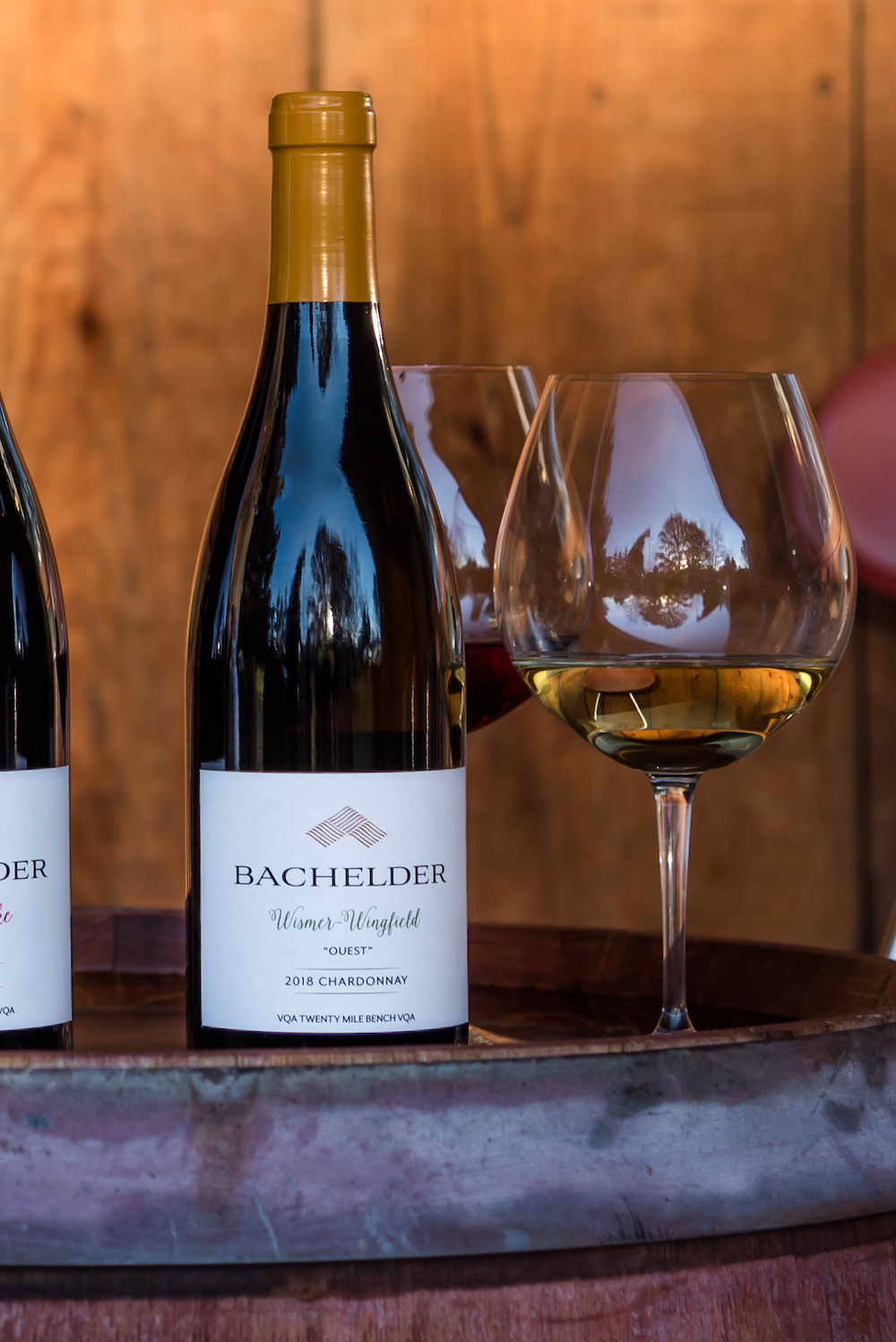
Bachelder Wismer Wingfield Ouest Vineyard Chardonnay 2018 ($45, 94 points) — In the pantheon of potential “grand cru” vineyards in Niagara, Wismer-Wingfield, mined for its liquid gold from some of Niagara’s most terroir-focused winemakers led by Thomas Bachelder, this would be among the first named to such a controversial accolade. The vineyard is located 6.8 km from Lake Ontario at an altitude of 160 metres. The Wingfield parcel has always shown profound, singular terroir on a perfectly exposed, well-drained slope on the east side of Victoria Avenue in Vineland. Both the highest elevation and furthest from the lake for all of Bachelder’s sourced parcels (50 metres in altitude and 1,000 metres further from the Lake than other Wismer parcels), Wingfield is picked 10 days to two weeks after other Chardonnay vineyards. The vines are now nearly 30 years old, planted in 1993 on lighter silty/clay and dolomitic limestone soil, it shows the classic Vineland (as distinct from Jordan) combination, of what Bachelder calls “plush richness and tight minerality.” The Wismer-Wingfield block has always been sourced from the western part of the parcel, which makes for a long hang-time and “an intense, rich, noble flavour, overlaid by a tight, long minerality.” It has been named (more than once) as Wines In Niagara’s Most Thrilling Wine of the Year and consistently scores 93+ points and is yet again the superstar in the 2018 Bachelder lineup. Go ahead and compare this to Puligny-Montrachet, or better yet, taste both side by side and make your own call. It has such a complex, if not just a tad tight right now, nose of saline/flinty minerality, a floral note of elderflower, ripe pear, lemon, cream, bin apple, vanilla toast, sweet oak spices and encased in pure elegance that will take patience to fully reveal itself. Such power, grace and complexity on the palate with pure pear and bin apple fruits, lemon zest, layers of saline minerality and flinty nuances with subtle biscuit-y notes, elegant vanilla toast and spice with fresh, lifted finesse through a long, long finish. Tight, yes, but wait for this to fully reveal itself. I sense another blockbuster that Chardonistas crave. Cellar 5+ years, but try at least one of them now so you can watch the evolution.
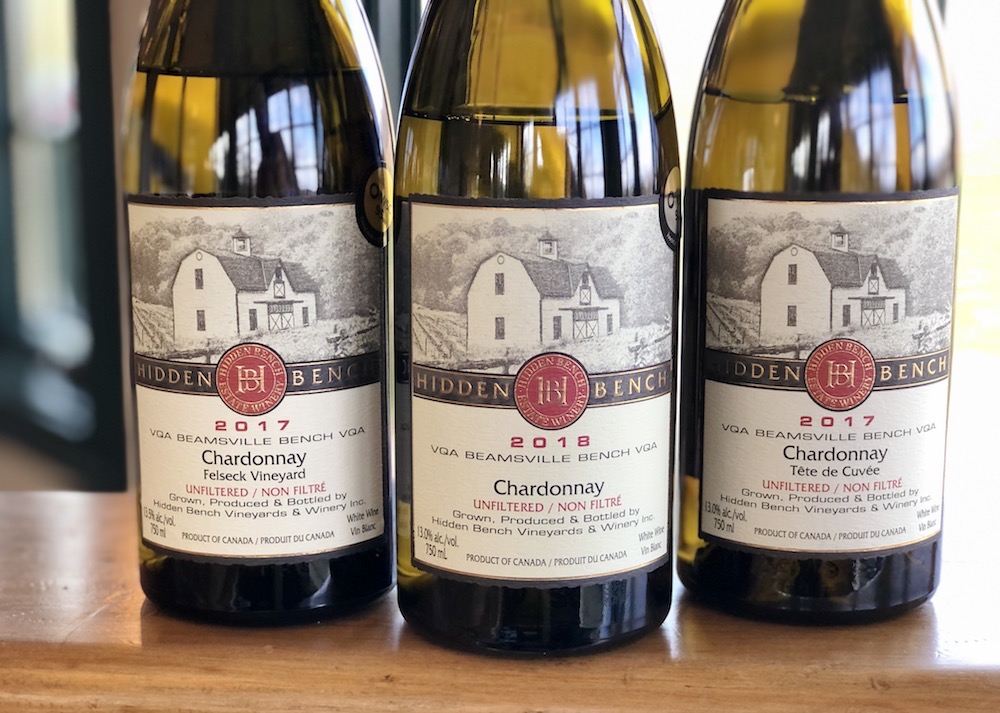
Hidden Bench Estate Chardonnay 2018 ($30, 93 points) — “The most holistic of our wines are the blends,” says winemaker Jay Johnston. “I just love pulling the components together for these wines.” The blend is chosen from the three estate vineyards — Locust Lane, Felseck and Rosomel — with aging in concrete egg (4%) and the rest in French oak (15% new oak) for nine months. Maybe the best Chardonnay at this level made to date at Hidden Bench and hard to imagine a better Chard at this price point in Niagara. It has a beautiful nose of pear, lemon zest, vanilla toast, and elegant spice notes. It’s rich and broad on the palate with a range of stone fruits, citrus zest, vanilla bean, minerals and spice through a clean, fresh finish. Simply, a delicious example of Niagara Bench Chardonnay.
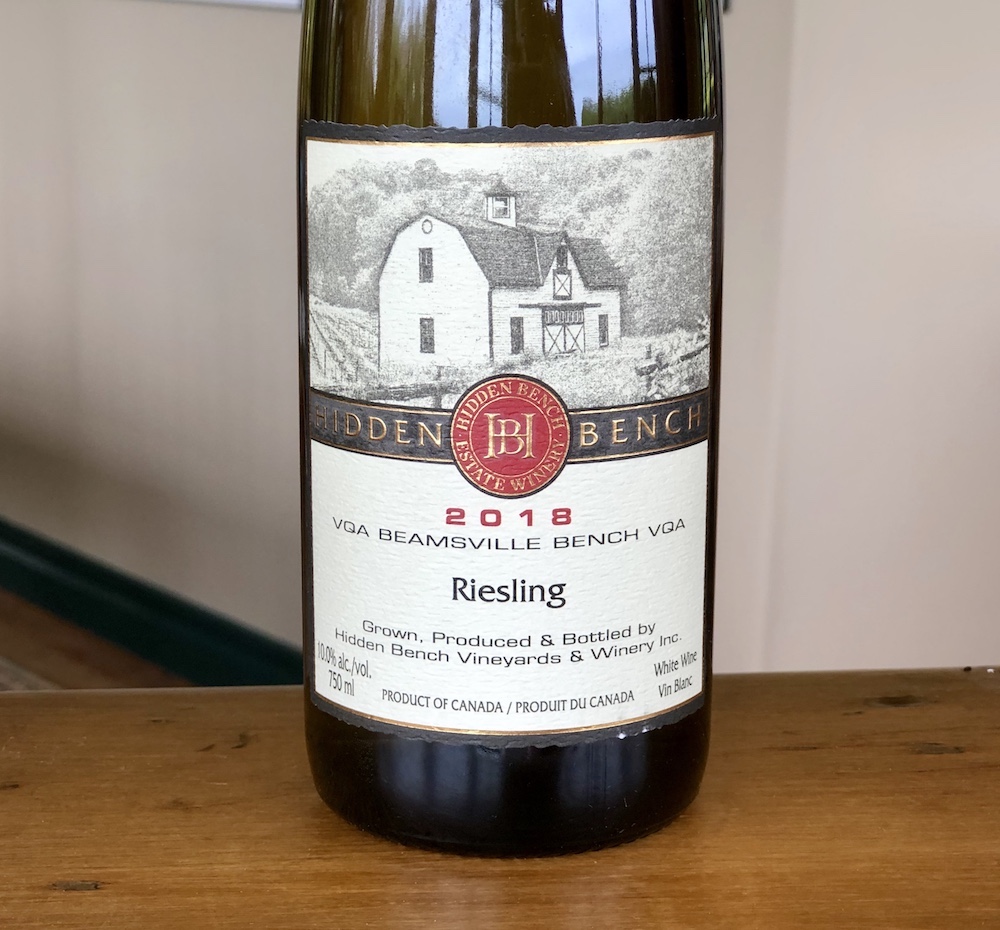
Hidden Bench Estate Riesling 2018 ($25, 91 points) — This is a blend of estate fruit from Locust Lane, Felseck and Rosomel vineyards and finished at a pleasant 10% abv. It has a lovely perfumed nose of lime, grapefruit, crushed stones, lemon and apricot. It’s pure and minerally driving on the palate with pristine citrus fruits, apricot, honey and electric acidity on a clean finish. Can cellar 7+ years.

Hidden Bench Estate Gamay 2019 ($30, 92 points) — After contracting a vineyard in the Lincoln-Lakeshore appellation in 2013, and planting the first crop in 2016, Hidden Bench Estate Winery has joined the growing #GoGamayGo fan club and released two certified organic Gamay Noirs, in 2020. The first offering was bottled under the Hidden Bench label and is crafted in a “cru” style by winemaker Jay Johnston, the second Gamay was released under the natural series label called Rachis & Derma, loosely translated to skin and bones, and made in a more reductive style that’s unfined, unfiltered and sees nothing added but a tiny bit of sulphur at bottling. I retasted the traditional style Gamay (the first sample wasn’t bottled when last tasted) with proprietor Harald Thiel and Johnston at this tasting. This has a lovely nose of savoury plums, earth, red berries and light spice notes. This is highly crushable on the palate with persistent notes of raspberries, cherries, plums, light tannins, touch of reduction and rousing acidity through a tangy, juicy finish. Upon retasting, the reductive notes are much more integrated and the spices are more prominent.
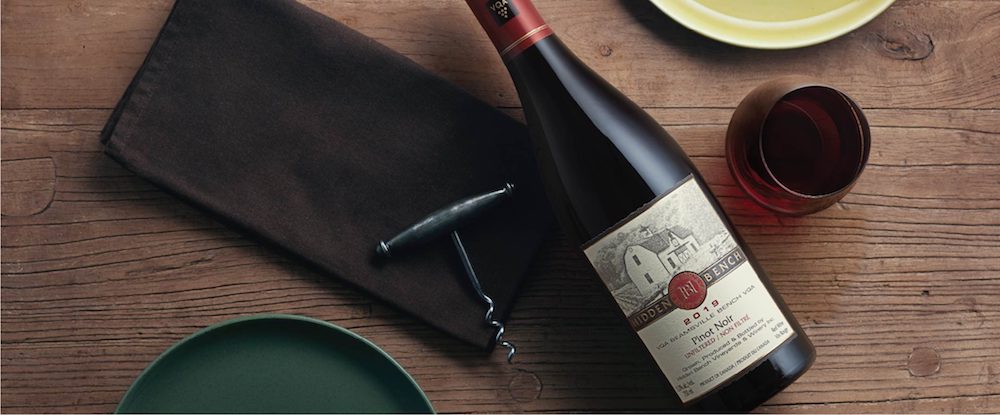
Hidden Bench Estate Pinot Noir 2019 ($35, 91 points) — This Pinot is a blend of fruit from the three estate vineyards — Locust Lane, Felseck and Rosomel — and gets the same attention to detail as the single-vineyard wines. It’s aged in French oak (29% new) for 10 months and is bottled unfiltered and unfined. It shows expressive cherries and wild raspberries on the nose with sweet spice notes and a touch of earth. The red berries are bright on the palate with supporting plums and spice in a juicy, fresh and approachable style. Pretty good now but can cellar for a couple of years.
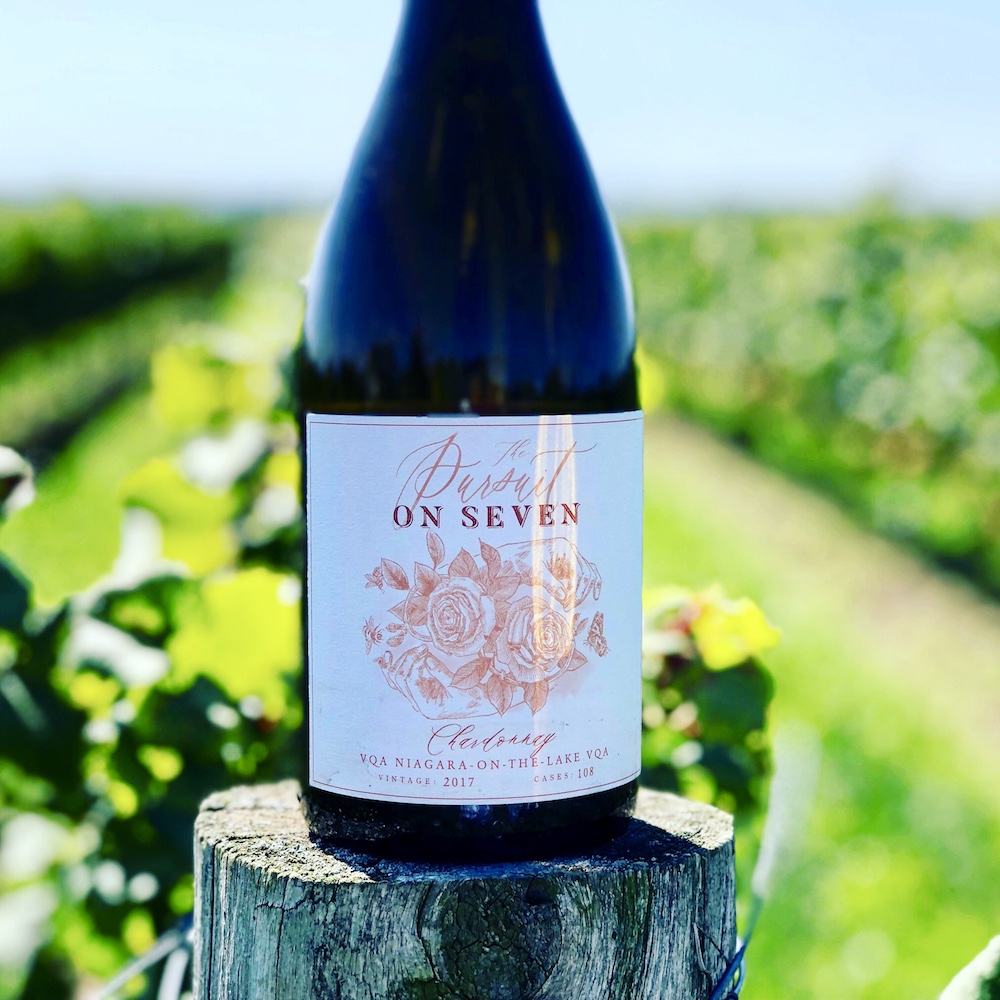
On Seven The Pursuit on Chardonnay 2017 ($45, Flagship stores only, 93 points) — This was the first publicly released wine from On Seven and is sourced from the home vineyard consisting of calcareous-loam and clay soil from vines planted in 2014 to Dijon clone 76. It was hand picked and whole cluster pressed. After settling to remove gross lees, the juice was transferred to large format French oak barrels (20% new, 80% neutral) for wild fermentation and aging for 14 months. This has such a pretty nose of fresh pear, salinity, stony minerality, crisp apple, lightly toasted vanilla, lemon blossoms and subtle, unobtrusive oak accents. This shows its full personality on the palate with rich yet poised flavours of pear/quince, river-rock minerality, gorgeous texture and oak accents all perfectly balanced from start to finish. The finish is clean and with just a touch of lemon zest on a long, lingering finish. Welcome to the grand mosaic of Niagara, On Seven.
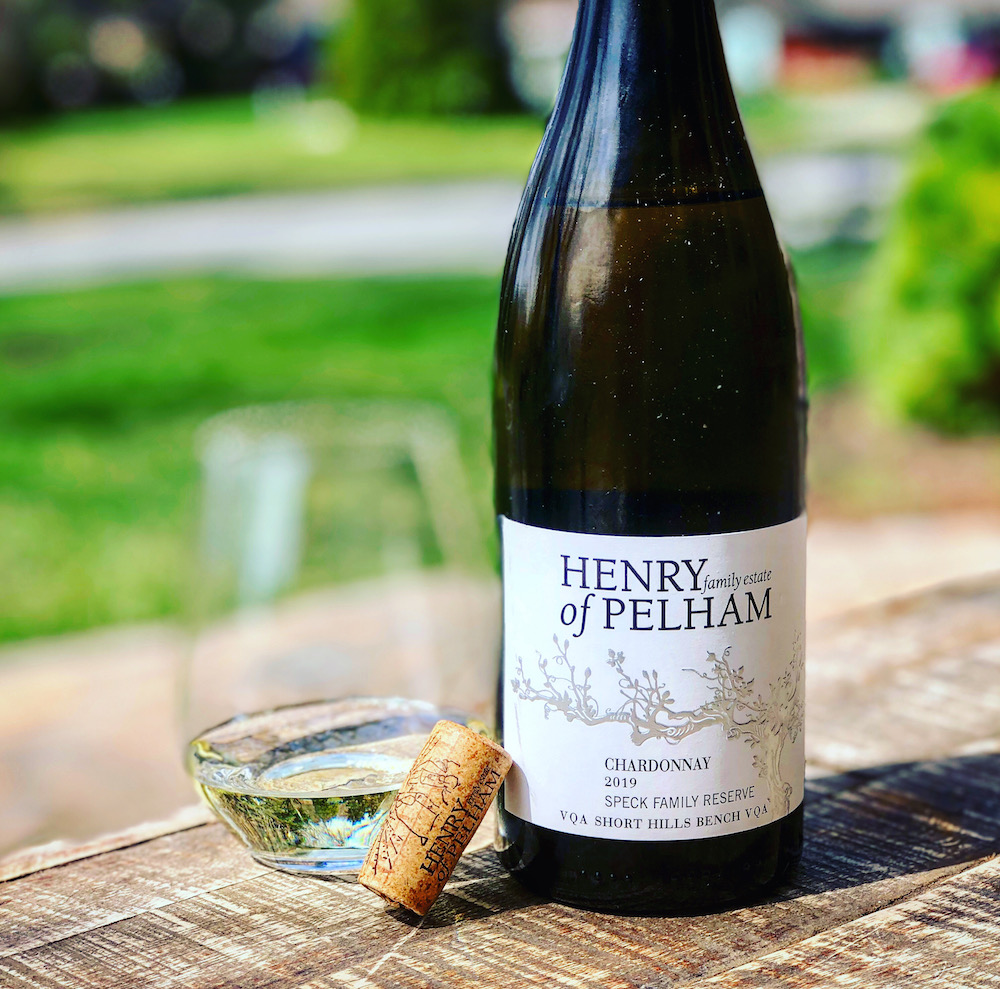
Henry of Pelham Speck Family Reserve Chardonnay 2019 ($30, 92 points) — This is the Speck brothers’ top Chardonnay in the portfolio. It’s made from the best Chardonnay blocks at the estate’s Short Hills Bench vineyards and is aged up to 10 months in French oak barrels. The nose starts with a fresh wave of saline minerality then summer pear, golden apple, lemon blossom and elegant oak spices. It is much more rounded on the palate with ripe stone fruits of nectarine, pear, apple and then butterscotch, spice and juicy acidity through a bright, clean finish. Can cellar 5+ years. I paired it with a delicious pasta with a lobster and Chardonnay cream sauce, pancetta, garlic, shallots and Parmesan. Ooh la la!

Featherstone Rosé 2020 ($16, 89 points) — This rosé blend of Cabernet Sauvignon (50%), Gamay Noir (30%), Chardonnay (13%) and Merlot (7%) shows a bright cherry red colour in the glass. It has an expressive range of raspberries, cherries and strawberry patch on the nose just a hint of savoury herbs. There is subtle hint of sweetness on the palate that highlights the ripe red berries and kick of herbs and savoury notes on a bright, lifted and refreshing finish. An always reliable rosé from the folks at Featherstone.
And a beauty from B.C.

Mt. Boucherie Merlot 2018, Okanagan Valley ($25, 89 points) — This Merlot was farmed from multiple sites in the South Okanagan and Similkameen Valleys and aged in 25% new French oak and 75% neutral French and American oak for nearly 6 months. It has a meaty nose of brambly raspberries, mocha, plums, spice and cedar notes. It has a smoky/savoury edge on the palate with firm tannic structure and red berries, earth and spice with a tangy, juicy finish. A nicely structured wine at this price point that can be cellared 5+ years.
Also released, but not reviewed:
• Lakeview Cellars Riesling Icewine 2019 ($35 for 200 mL)
• Henry of Pelham Estate Riesling 2019 ($20)
• Cuddy by Tawse Chardonnay 2016 ($26)
• Cuddy By Tawse Cabernet/Merlot 2018 ($28)

Final note: Ordering for the Vintages Classics Collection begins Sept. 2 (Thursday). You can view the release here. Of note from the release is the Cloudsley Cellars Homestead Pinot Noir 2017 ($50). I do not have a review of that particular Pinot, but I can certainly vouch for the quality of Pinots and Chards from this excellent ambassador of Twenty Mile Bench Burgundy varieties.
Here’s a note on the 2015 version of the Homestead, if this helps:
Cloudsley Homestead Vineyard Pinot Noir 2015 ($50, 92+ points) — Now, here is a Pinot that sneaks up on you and then surprises for its depth and complexity. Slightly closed/muted on opening but it slowly reveals a mélange of crushed red berries, mineral, wet earth, forest mushrooms and subtle spice. Such gorgeous mouth-feel as it opens up with precision, silky tannins and electric acidity that lights up the bright red berries, subtle cassis notes, elegant spice and deep mineral notes that are all delivered on a juicy and long finish. This is a youthful wine that I fully expect to show better (and hence the 92+ rating) if you leave it in the cellar for a year or two.


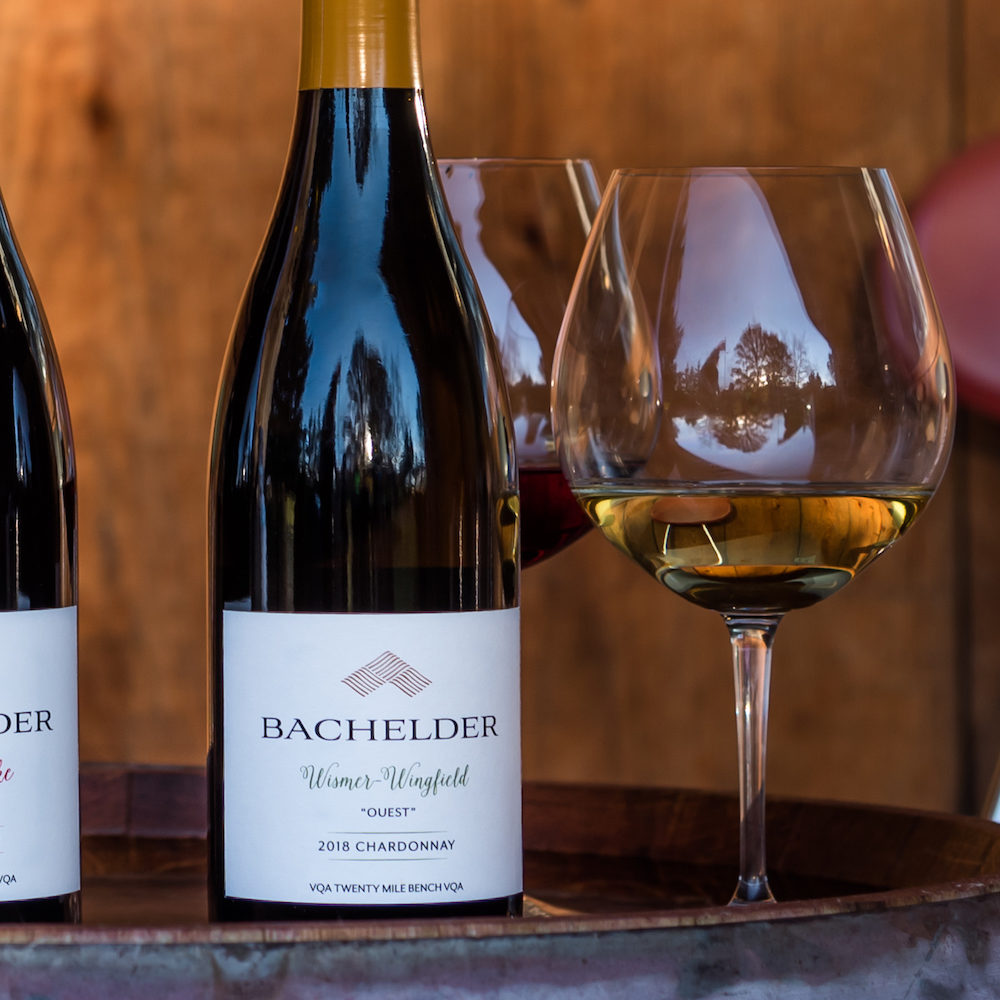





Comment here